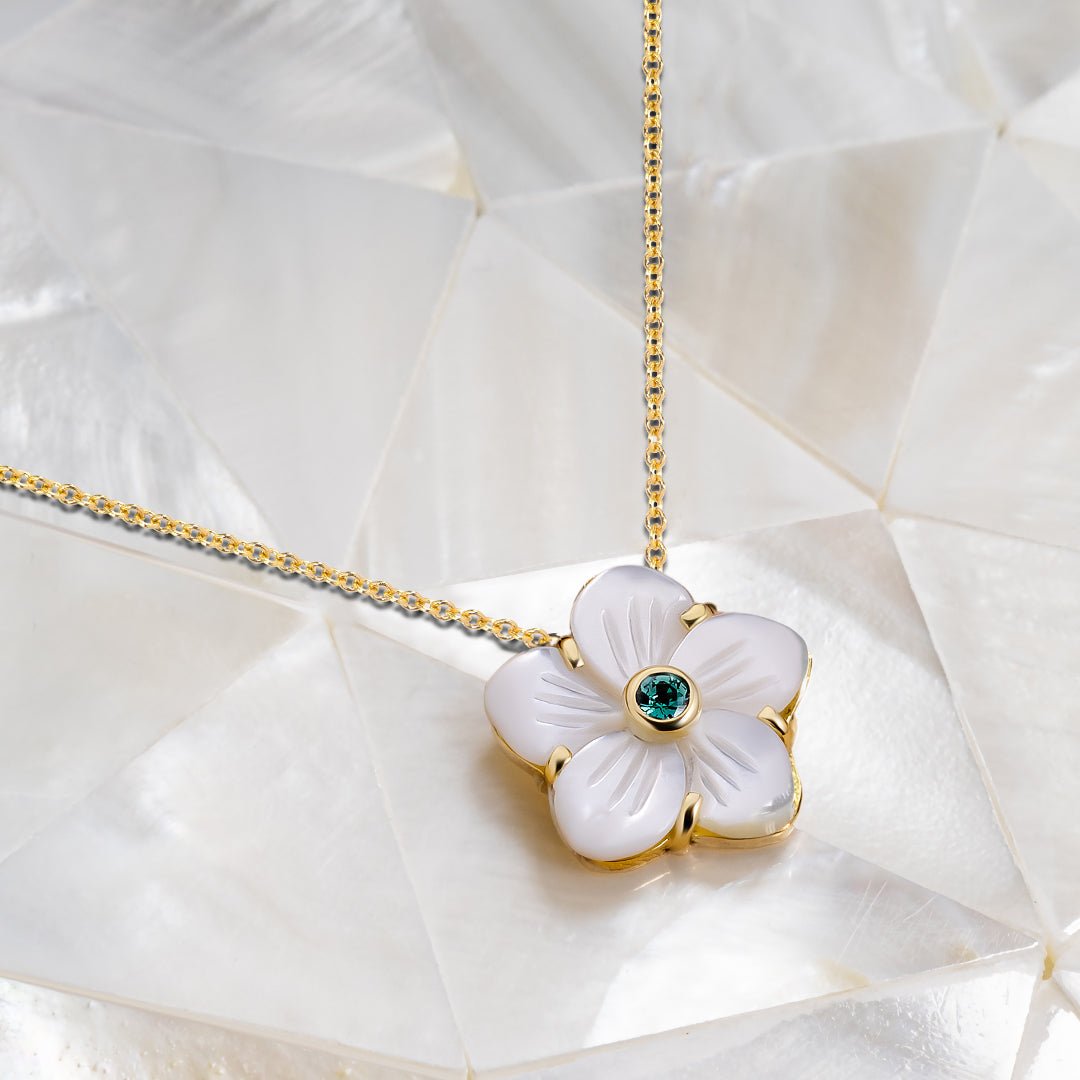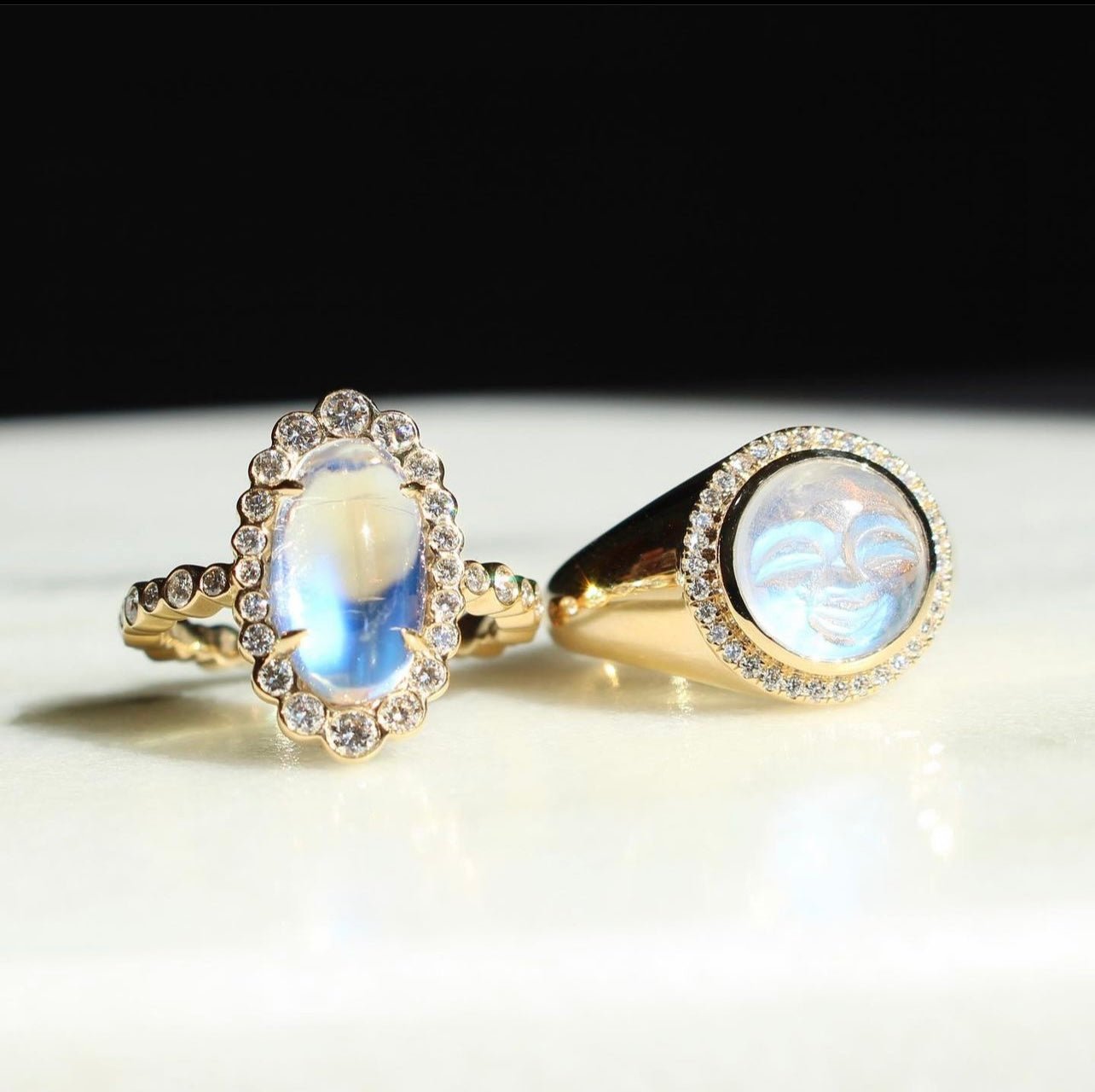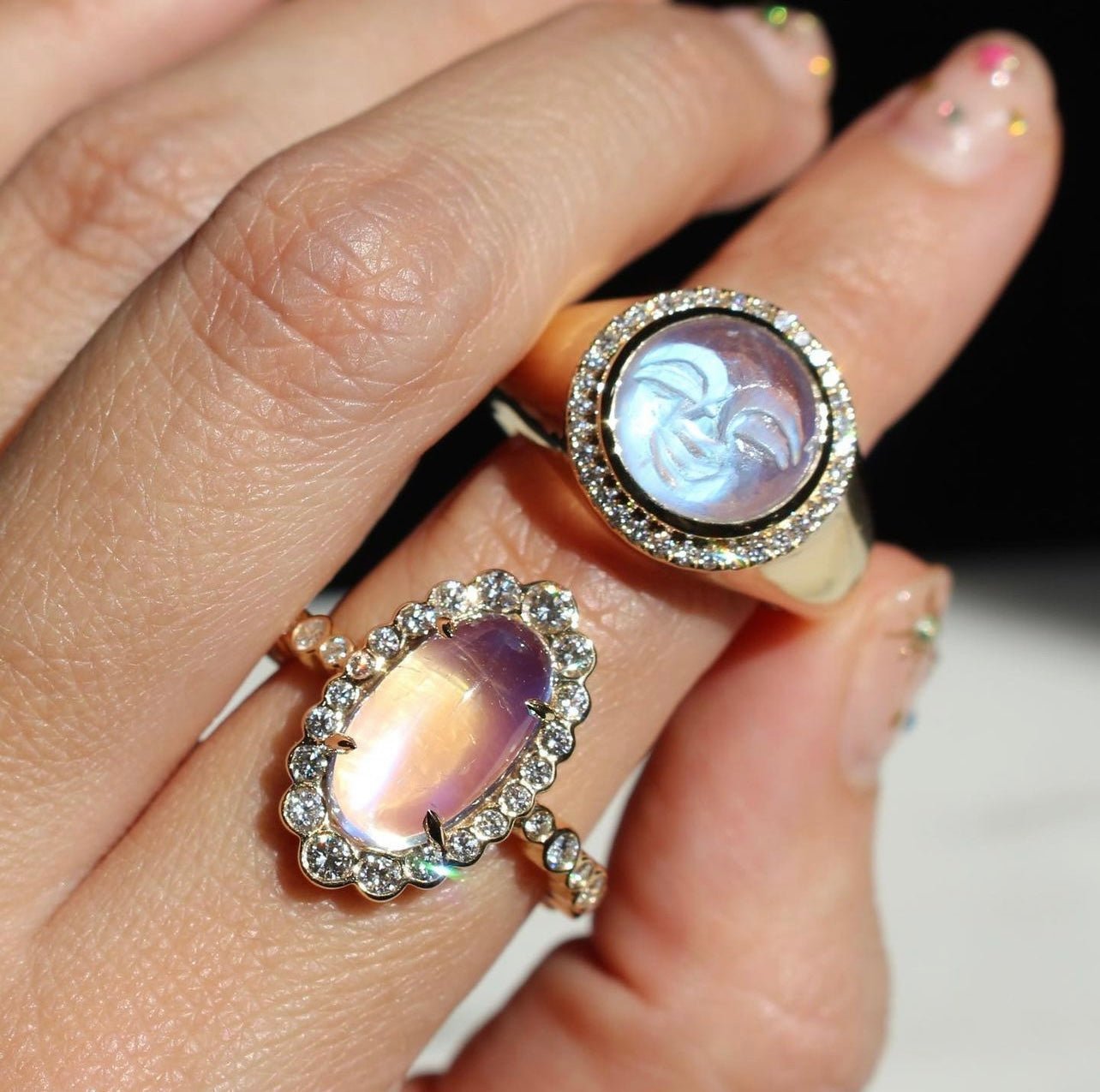Have you ever been so exasperated or surprised that you shouted, “Mother of Pearl!” Maybe it is more likely you heard one of your parents yell the phrase as a child. The outdated lingo is actually so much more than just a cry of stress. It is one of the most exquisite types of pearls that nature has to offer.
In fact, the mother of pearl is anything but a stress-induced entity. It is not a common gemstone created by pressure and heat in dusty and dark mines. It comes from the serene and beautiful ocean, nestled inside of the shells of mollusks. Most commonly, they are found coating the inside of oysters’ shells.
Interestingly, the mother of pearls is a mineral. Mollusks produce these minerals inside of their shells to keep their little homes safe from harm. This fortification is also known as nacre, or mother of pearl. It has been famed for its stunning sheen for centuries, apart from its protective qualities for little sea creatures.
Allow us to walk you through the mother of pearls’ origin story, how they are used, and their numerous meanings. We may even throw in a few of our favorite mother of pearl jewelry pieces too!
Where Does Mother Pearl Come From?
Mother of pearl comes from the inner lining of mollusks’ shells. Mother of pearl might not be the likeliest of jewelry materials, but that by no means diminishes its wearability.
Unprecedented Strength
Since the natural purpose of the nacre is to take care of the shell it lines, it has to be quite strong. Achieving this level of strength is a bit of a mystery.
The University of Michigan and Macquarie University deployed scientists to study the feat. They discovered that the mother of pearl is durable due to its aragonite layers.
Aragonite is a type of calcium carbonate, and the layers are interwoven with the silk-adjacent protein conchiolin. Mollusks themselves produce conchiolin, so the aragonite crystals naturally attach to it to form these barriers.
Since conchiolin is a protein, it is able to bend and move about to deter breakage. This gives the crystallized aragonite malleability, making for the perfect duo. This is ideal for jewelry because the less prone a piece is to crack, the better investment it is.
Mother of Pearl: Beautiful Complexity
Mother of pearl can be a complicated gem to wrap one’s mind around. This is because it is naturally complex. It rests at a 3.5 on the Mohs scale of hardness, which is wildly soft and concerning for use in rings or bracelets. However, it is made up of this ultra-strong material that holds up to pressure and rebuilds itself after damage.
How does one weigh the pros and cons here? It is best to look at mother of pearl as a multi-faceted material. It can be included in jewelry that has low wear and tear risk (pendants, earrings, etc.) and set with protections.
It is also very strong in its adaptability, which might count even more than its Mohs scale rate. Mother of pearl’s aragonite-conchilion mixture is believed to hold up against compression as well as concrete!
It is so highly sought, even with incredibly low hardness, because of its appearance. It hypnotizes, enchants, and captures imaginations across the globe.
The Shine of a Lifetime
This gemstone is known for its iridescence. You may find a sparkly diamond or a particularly glowing ruby, but mother of pearl is in a different stratosphere. Once again, aragonite saves the day. It is the creator of mother of pearl’s incredible sheen since its crystals divert light waves through varying directions.
It is a little slice of natural magic. Some view mother of pearl as similar to moonstone for its visual qualities.
Mother of pearl also dazzles in a variety of colors. Just as their iridescence can be unpredictable, so can their hue. You can find mother of pearl in cool-toned silver, green, and blue. It also occurs in warm-toned pink, purple, and bronze.
What About Pearls?
Most jewelry consumers are more familiar with pearls than mother of pearls. They have similar origins, both created by a nacre, but pearls are round gems rather than shell lining. A nacre layer encompasses something that has infiltrated the mollusks' shell and increases in thickness until a pearl emerges.
Mothers of Pearl Throughout History
Pearls have been documented in jewelry use and lore since 2,206 BCE in China.
Freshwater and saltwater bodies can produce pearls, but mussel-made pearls dominate the former while oyster-made pearls are in the latter. There is not a significant difference between the two categories, but saltwater pearls are favored for their consistent ball shape.
How Are Mother of Pearls Different From Pearls?
In terms of size and shape, mother of pearl is generally larger than a pearl. Pearls are fixed-shape, circular gemstones. Mother of pearl lines differently sized shells and has a bigger surface area when it's carved out for jewelry use.
There is also the topic of price. Pearls are harder to come by than mother of pearl because they aren’t guaranteed to be included in any mollusk. All mollusks create a mother of pearl protection coating if they make nacre. This makes pearls more expensive and valued in the jewelry market than mother of pearl.
How Are Pearls Used in Jewelry?
Mother of pearl is gorgeous when set in jewelry, but it is typically a thin material to work with.
Since pearls tend to form in a spherical shape, they are often used in classic pearl necklaces. Mother of pearl is more likely to appear as a flat piece in jewelry. It works well as a background to other gemstones, even pearls.
Mother of pearl's thin and attractive shape made it popular for tiling floors or backsplash in rooms. It has also been used throughout history for brushes and necks of guitars. Scientists are trying to harvest nacre to use its aragonite for everyday needs and are attempting to mass-produce a synthetic version.
Oceanic Meaning
Jewelry and gemstones that reference different components of the ocean are always fan-favorite. Since the dawn of time, the sea has been a symbol of hope, prosperity, unpredictability, and rejuvenation. Many people look to ocean-themed jewelry as a reminder of the peace and tranquility they find within the waves.
Just like pearls, mother of pearl can be used as a reminder of the ocean. In some ancient teachings, pearls were believed to be created by the gods using lightning. They are also connected to the Goddess Aphrodite. There is certainly less lore surrounding mother of pearl, but the same beliefs likely apply to this ocean-bred creation.
The Mark Henry Jewelry Collection
At Mark Henry Jewelry, we love to incorporate unique and wearable gems. Since mother of pearl checks off both of those boxes, we are proud to include them in our creations. It not only enhances designs with other gems as a perfect canvas, but it stands well on its own.
Our Sweetheart Pendant is a great example of this. A centered mother of pearl has been carved into the shape of a heart. It is surrounded by 0.14ct of diamond, making for a classy and poignant outward glow. With an 18kt gold setting and chain, it can be an everyday look or a formal statement piece.
If you want something a bit more ocean-inspired, look no further than our Captain’s Wheel Dangling Earrings. In the shape of a boat’s navigator, this piece features two rounded mother of pearl leaves. 0.24ct of color-changing alexandrite adorns the interior. 0.60ct of petite diamonds form the handles of the wheel for a sophisticated yet realistic look.
How To Care for Mother of Pearl
You should keep your mother of pearl clean and undamaged. This is especially important because it is only a 3.5 on the Mohs scale and is prone to scratches.
We recommend that all fine jewelry pieces be cleaned with a simple mixture of soap and water. Avoid harsh chemicals, as they can cause even more issues to your stones or metal. Gentle dish soap will do the trick, and you should always allow your jewelry to dry before putting it back on.
Alternative cleaning methods for mother of pearl only include soaking a microfiber cloth in olive oil for a quick swipe. You can also get that good-as-new shine back by cleaning your mother of pearl with a dry satin cloth.
No matter what trick you choose, always set mother of pearl pieces apart from harder stones in your jewelry closet. It is far too gentle to be scraped by diamonds or prongs.
Consider Your Audience
Mother of pearl jewelry is the best fit for someone who is enthusiastic about the ocean or loves organic pieces. This material is an excellent reminder of nature and can help one reconnect to the beauty of the outdoors.
Sources:
What Is Mother of Pearl? Formation, Properties, & Care | All Things Nature
The science behind mother of pearl: what makes Nacre the mother of materials | Harvard
Nacre - an overview | ScienceDirect Topics


